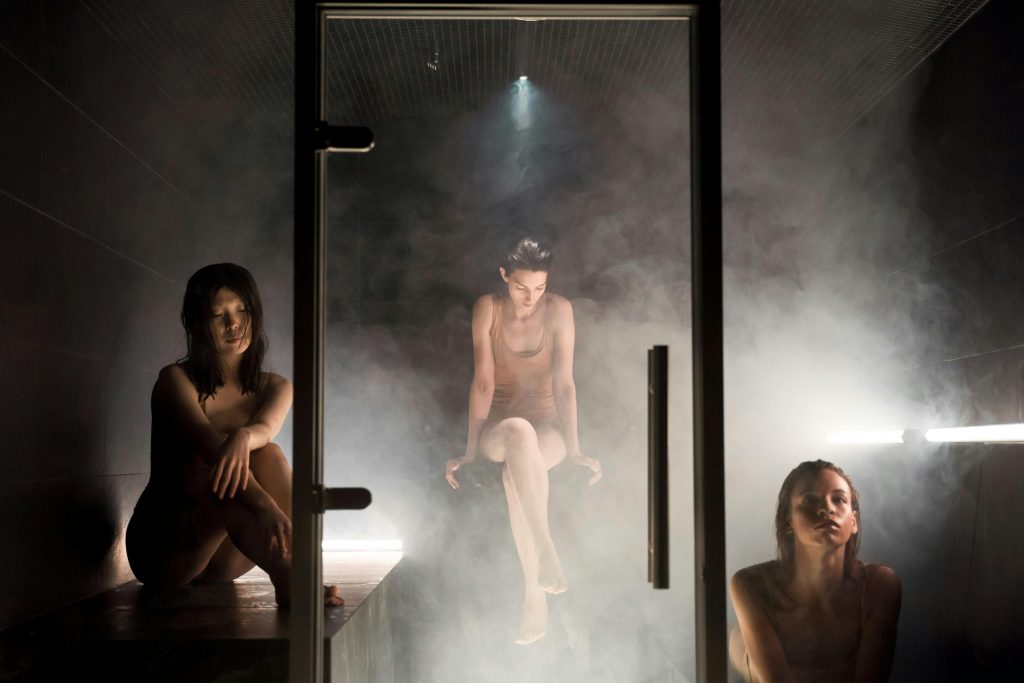Saunas have been used for hundreds of years to relax, relieve stress, and support health. But one key factor makes all the difference in your sauna experience: temperature.
Whether you’re new to saunas or a regular user, it’s important to understand the right sauna temperature. How hot is too hot? What’s the best temperature for beginners? Does it change depending on the type of sauna?
In this guide, we’ll break it all down in a simple and clear way.
Why Sauna Temperature Matters

Sauna temperature affects your:
- Comfort
- Safety
- Health benefits
- Risk of overheating
If the sauna is too cold, you may not sweat enough to enjoy the benefits. If it’s too hot, it can be dangerous—especially if you stay in too long.
Different types of saunas also use different heating methods. That means the temperature you feel (and how your body reacts) can change depending on the sauna style.
Typical Sauna Temperature Ranges
There are a few common types of saunas. Each has its own typical temperature range.
1. Traditional Finnish Sauna
- Temperature Range: 150°F to 195°F (65°C to 90°C)
- Humidity: Low (except when adding water to rocks)
- Heating Method: Electric or wood-burning heater warms up stones
This is the hottest type of sauna. Some people prefer it around 170°F, while others go above 190°F. Short stays (10–20 minutes) are common.
2. Infrared Sauna
- Temperature Range: 110°F to 140°F (43°C to 60°C)
- Humidity: None
- Heating Method: Infrared panels that warm your body directly
Infrared saunas feel cooler but still make you sweat a lot. They’re great for beginners or those who prefer gentler heat.
3. Steam Room (Wet Sauna)
- Temperature Range: 110°F to 120°F (43°C to 49°C)
- Humidity: 100% (very humid)
- Heating Method: Steam generator
Steam rooms are cooler than dry saunas, but the high humidity can make them feel hotter. People often stay 10–15 minutes per session.
Best Sauna Temperature for Health Benefits
Using a sauna regularly can support your overall wellness. From easing sore muscles to promoting better blood flow, saunas have a lot to offer—but only when used at the right temperature. Each type of sauna has its own ideal range that balances comfort, safety, and effectiveness.
Traditional Sauna (Dry Heat)
Traditional saunas are the most common and use dry heat to warm the air and your body. These saunas tend to run much hotter than other types.
- Ideal temperature: 160°F to 180°F
- Recommended session time: 10 to 20 minutes
- Best for: Muscle relaxation, circulation, and stress relief
The dry heat helps your body release tension and boosts blood flow. Because of the higher temperatures, it’s important not to stay in too long.
Infrared Sauna (Direct Body Heat)
Infrared saunas use infrared light to heat your body directly without warming the air as much. This makes them more comfortable for people who are heat-sensitive.
- Ideal temperature: 120°F to 130°F
- Recommended session time: 20 to 30 minutes
- Best for: Gentle detox, lower blood pressure, and chronic pain relief
The lower temperature makes these saunas easier to tolerate, especially for beginners. You still sweat a lot, but the heat feels more manageable.
Steam Room (Moist Heat)

Steam rooms create heat using boiling water, filling the room with humid air. Even though the temperature is lower, the humidity makes it feel hotter than it really is.
- Ideal temperature: 110°F to 115°F
- Recommended session time: 10 to 15 minutes
- Best for: Skin hydration, sinus relief, and relaxation
Because of the intense humidity, it’s easy to overheat in a steam room even though the numbers are lower. Make sure to take breaks and hydrate.
General Tips for Safe Sauna Use
Regardless of the sauna type, keep these safety tips in mind to make the most of your session:
- Hydrate before and after to prevent dehydration
- Listen to your body—step out if you feel dizzy, nauseous, or too hot
- Avoid alcohol before using a sauna
- Don’t exceed the recommended time, especially as a beginner
- Cool down slowly after your session to prevent shock to your system
By choosing the right temperature and time for the sauna you’re using, you can enjoy the full benefits without putting your health at risk.
Sauna Temperature for Beginners
If you’re new to saunas, start on the lower end of the temperature range. Here are a few beginner tips:
- Start at 150°F in a traditional sauna
- Try 110°F–120°F in an infrared sauna
- Limit sessions to 5–10 minutes at first
- Sit on lower benches where it’s cooler
- Take breaks and drink water
As your body gets used to the heat, you can increase time and temperature slowly.
Sauna Temperature Safety Tips
Enjoying a sauna session is not just about relaxing in the heat—it’s also about being smart and safe while doing it. If you’re not careful, high temperatures can lead to dehydration, overheating, or other health risks. Follow these safety tips to keep your sauna experience both safe and beneficial.
1. Stay Hydrated
One of the most important things to do before and after using a sauna is to stay hydrated. The heat causes you to sweat a lot, which means your body is losing fluids quickly.
- Drink water before entering the sauna.
- Take small sips during your session if allowed.
- Rehydrate thoroughly after your session to replace lost fluids.
Avoid drinks with caffeine or alcohol, as they can increase dehydration. Stick to water or electrolyte drinks to help your body recover.
2. Use a Thermometer
Most saunas come with a built-in thermometer, but it’s always a good idea to double-check if the temperature feels off. Monitoring the heat ensures you stay within a safe range and don’t accidentally overheat.
- Traditional saunas: Keep the temperature between 160°F and 180°F.
- Infrared saunas: Stay within 120°F to 130°F.
- Steam rooms: Aim for 110°F to 115°F.
If your sauna doesn’t have a visible thermometer, consider using a portable one to be sure.
3. Don’t Overstay
It can be tempting to stay in longer to “sweat it out,” but more time doesn’t always mean more benefit. Staying too long can raise your risk of dehydration, dizziness, or even heat exhaustion.
Recommended session times:
- Beginners: 5–10 minutes
- Most users: 10–20 minutes
- Advanced users: Up to 30 minutes in lower-temperature saunas (like infrared)
If you ever feel lightheaded, nauseous, or overly tired, leave the sauna immediately and cool down.
4. Cool Down After
After sitting in a hot sauna, your body needs time to cool down gradually. A proper cooldown not only prevents dizziness but also helps boost circulation and muscle recovery.
Here are some smart ways to cool off:
- Take a cool (not icy) shower to lower your body temperature gently.
- Step into a cooler room and rest for 5 to 10 minutes.
- Dry off with a clean towel and sit quietly while your body adjusts.
Some people also enjoy contrast therapy, alternating between heat and cold, but it’s best to try that only after you’re experienced with sauna use.
5. Avoid Alcohol or Heavy Meals
What you do before your sauna session matters just as much as what happens inside. Using a sauna right after drinking alcohol or eating a large meal can stress your body unnecessarily.
- Alcohol can impair your body’s ability to regulate heat and increase the risk of dehydration or fainting.
- Heavy meals can redirect blood flow to your digestive system, making you feel sluggish or overheated in the sauna.
Instead, try to wait at least 1 to 2 hours after eating before entering the sauna, and avoid alcohol entirely beforehand.
6. Dress Appropriately
What you wear—or don’t wear—can make a big difference in your sauna experience. Wearing heavy clothing or too many layers can cause overheating, while the wrong materials may trap sweat and bacteria.
- Use a clean towel to sit on or wrap around your body.
- Avoid wearing jewelry or metal accessories that can heat up and burn your skin.
- Skip synthetic materials like polyester or nylon—they don’t breathe well.
If you’re in a public sauna, follow the facility’s dress code, but always prioritize comfort and hygiene.
7. Don’t Use the Sauna When Sick or Pregnant (Unless Approved)
While saunas can boost wellness, they’re not always safe for everyone—especially if you’re not feeling well or have certain medical conditions.
- If you’re sick (with a fever, flu, or cold), it’s best to skip the sauna until you recover.
- Pregnant people should consult with a doctor before using a sauna, as high temperatures can be risky during pregnancy.
- People with heart conditions, high blood pressure, or respiratory issues should also talk to a healthcare provider first.
It’s always better to be safe than sorry, especially when dealing with high temperatures and sensitive health conditions.
8. Use the Buddy System
If you’re new to sauna use or planning a longer session, it’s a good idea to have someone nearby in case you need help.
- Never use a sauna alone if you’re unfamiliar with it or if you have medical conditions.
- Let someone know you’re using the sauna and check in with them after your session.
This adds an extra layer of safety, especially for beginners or anyone pushing their limits.
How to Adjust Sauna Temperature
You can often adjust the sauna temperature manually using a dial or digital control panel.
Here are some tips:
- Set the sauna to a lower temp 15 minutes before entering.
- Let the sauna preheat fully before use.
- Add water to rocks in a traditional sauna to increase humidity (but not temperature).
- Use towels to insulate heat and reduce sweat on seats.
What Happens If Sauna Temperature Is Too High?
Sauna temperatures above 200°F (93°C) are not recommended. Overheating can lead to:
- Dizziness
- Nausea
- Fainting
- Dehydration
- Heatstroke (in extreme cases)
You should never fall asleep in a sauna or push yourself to stay longer in extreme heat. Safety comes first.
Monitoring Sauna Temperature at Home
If you have a home sauna, you need a reliable sauna thermometer. Many models also include a hygrometer (to measure humidity), which is useful for steam saunas.
Tips for home sauna owners:
- Mount the thermometer at eye level inside the sauna
- Avoid placing it directly above the heater
- Check the temperature before each session
For infrared saunas, your control panel usually tells you the temperature automatically.
Sauna Use for People With Health Conditions
If you have heart problems, high blood pressure, or are pregnant, talk to your doctor before using a sauna. The heat can affect your circulation and overall health.
Children under age 12 and elderly adults should also use saunas with caution and stay at the lower end of the temperature range for a shorter time.
How Sauna Temperature Affects the Body
Here’s what happens to your body as the temperature rises:
- 100°F–110°F: You begin to sweat lightly
- 120°F–140°F: Your heart rate increases, sweating intensifies
- 160°F–180°F: Your body works harder to cool down; core temperature rises
- Over 190°F: Heat becomes intense; risks increase
Your body’s natural cooling system (sweating) helps regulate heat, but it can only do so much. That’s why it’s important to stay within safe temperature zones.
Final Thoughts
Choosing the right sauna temperature is key to getting the most out of your sauna time. It affects your comfort, health, and safety. Whether you prefer a dry traditional sauna or a gentle infrared session, make sure to:
- Stay hydrated
- Stick to safe temperature ranges
- Start low and slow if you’re a beginner
- Listen to your body at all times
Using a sauna correctly can support your wellness goals and leave you feeling relaxed and refreshed. So turn up the heat—just not too much—and enjoy the many benefits of sauna therapy!